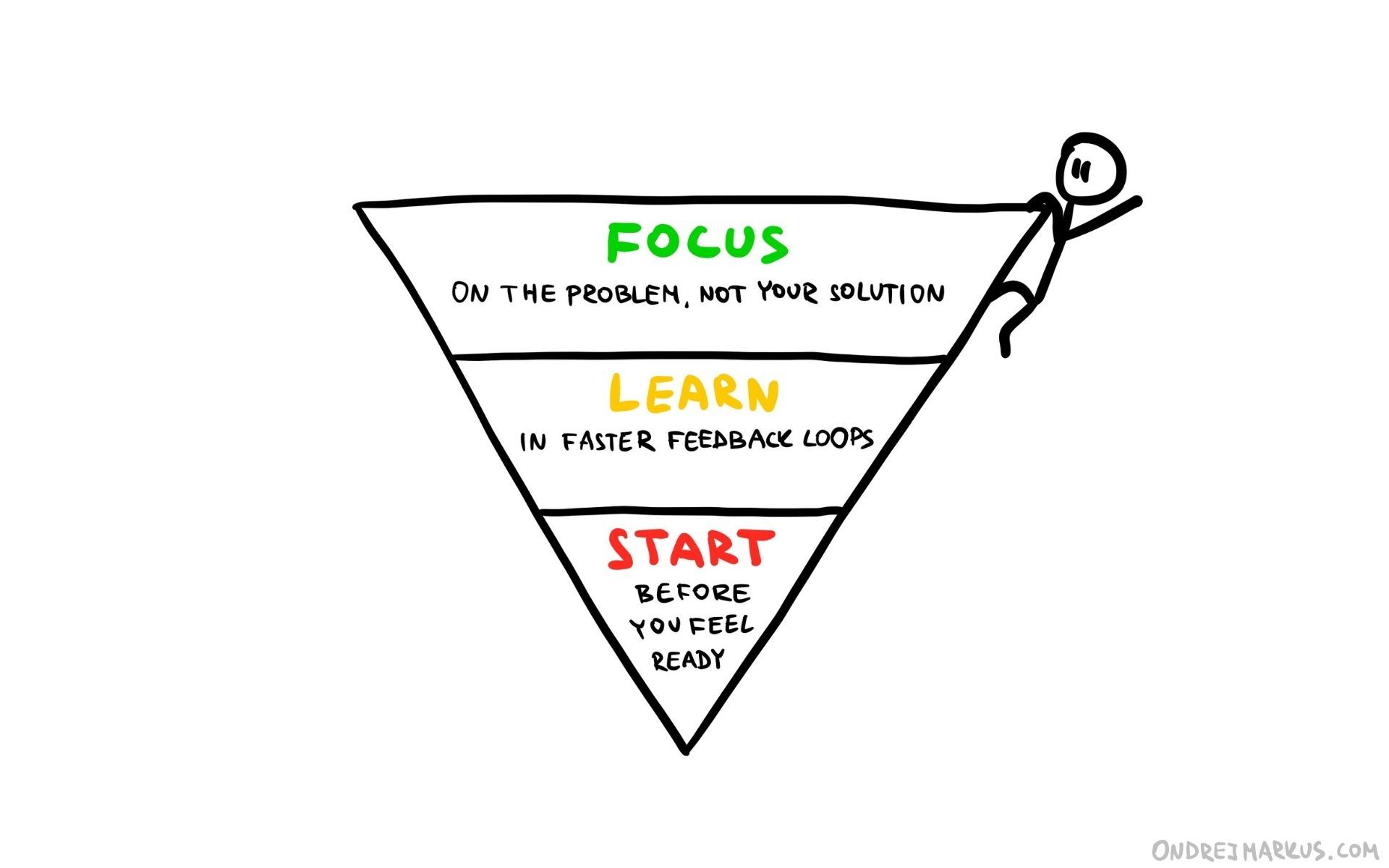

Innovators create new things. They invent products, designs, and ideas no one has done before. They push progress.
But most innovators aren’t a guy in a lab producing “innovations”.
An innovator can be every one of us in our jobs and projects. Because being an innovator is not a job title, it’s a skill anyone can learn.
Every day, we make choices to either keep doing things the old way that doesn’t make sense anymore, or we can invent a better way.
Today, I’m going to show you the 3 levels of mindsets and tools every innovator needs to understand to be successful at solving the right problems in the right way.
→ Level 1: Start before you feel ready
→ Level 2: Learn in faster feedback loops
→ Level 3: Focus on the problem, not your solution
The principles behind these levels will be useful to any creator, entrepreneur, and problem solver who wants to create things people actually need.
They’re the essence of becoming a mindful changemaker – someone who has both the courage and skills to create positive change in their life and in the world.
Let’s get into it.
This is the most important step of all. And it’s no accident it’s the first one. Because if you don’t pass this one, the rest doesn’t matter.
You have to start doing things before you feel 100% ready for them. No amount of theory can prepare you for everything that might happen.
That means there will be a moment when you have to make a leap of faith into uncertainty. You either accept it and go on, or you wait forever until it disappears. (And it never does.)
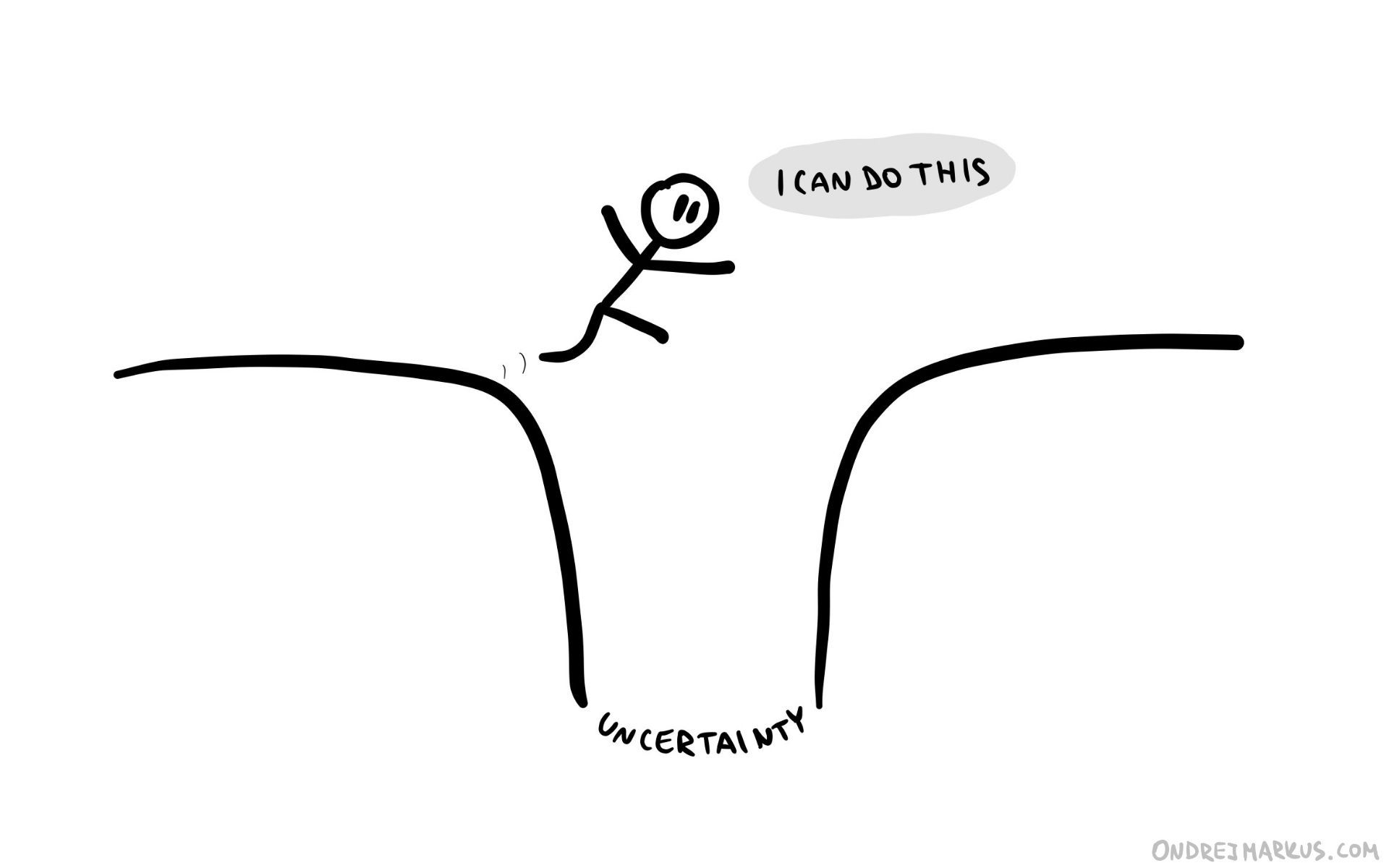
Make the leap and start
The real difference between people who take the leap and develop into innovators, and people who just wait for what happens to them, isn’t knowledge but courage.
No one is ever truly ready for anything. Some people just get used to doing things anyway.
I was lucky to be naive enough at 18 to start a business without thinking too much about it. It failed horribly in six months, but it happened. No one can take that from me. I created something out of nothing and that’s a powerful feeling to experience no matter the outcome.
I’ve built something that didn’t work, spent all my savings on it, but I survived just fine. More than that – it got me my first job that kickstarted my life in unexpected ways.
And all that was thanks to starting before I felt ready – I knew I don’t know what I’m doing – but I hoped I’ll figure it out on the go.
It’s the best thing I ever did for myself. Not the business idea – that was rubbish – but the move itself was outstanding. If I had a time machine, I would go back and hug my 18-year-old self for being so hungry and foolish.
Okay. Enough time-travel self-padding on the back.
The point is, anytime you’re new to anything, you have to act first to understand later. That’s how learning by doing works.
Start now. Start small. Start before you feel ready. And only then care about the next two levels. First, get into action.
Doing good innovation design is to learn as fast as possible by doing what doesn’t work until you find something that works.
Resources like money, energy, and time are limited, and being a good innovator means being economical with them.
The best way to do this is to work in faster feedback loops. That means shortening the time between creating an outcome and showing it to people.
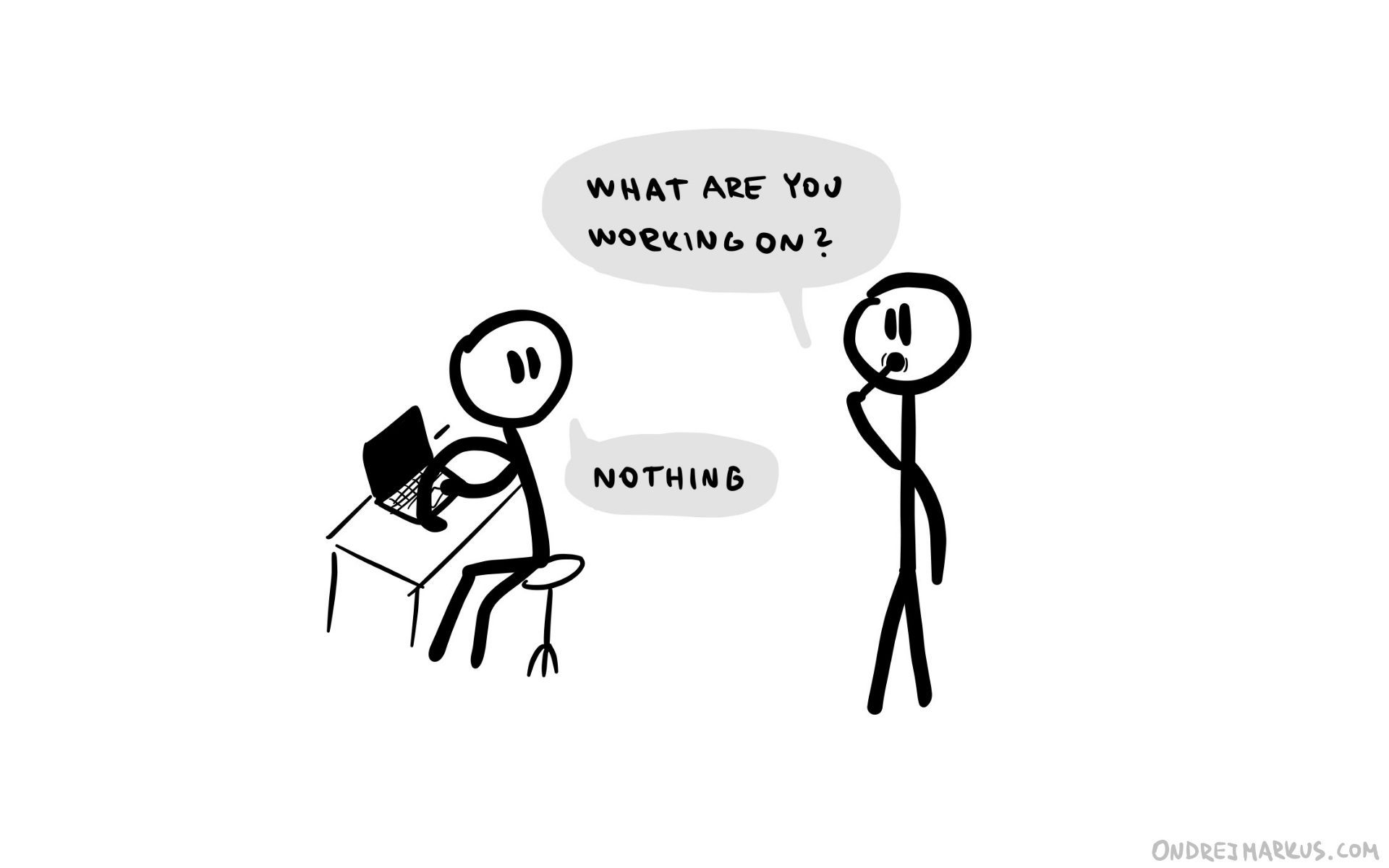
People don’t want to steal your ideas.
Back to my first business story.
Starting early is what I did well. Everything else, I did wrong.
Throughout the six months of development, I worked mostly in isolation. Then I launched the business with hopes of huge success during the Christmas season, but people didn’t want it.
Why?
I protected my “genius” idea from anyone who might try to steal it. So I worked in secret.
You see, my Christmas announcement was my first real interaction with customers. Until then, I based all my decisions on guesses: How much should it cost? How many types should I make? Which distribution channels should I use to sell it?
Everything I did was an uninformed guess. So it’s no surprise it failed horribly.
The whole six months was one big feedback loop:
They didn’t want it. I was out of money. The end.
But there is a better way to do this.
The trick is doing the same thing but much much faster.
Create the smallest possible outcome you can show to people, and use it to get feedback. That will help you see whether you’re on the right track for success.
Are you creating something people understand and want? Or not?
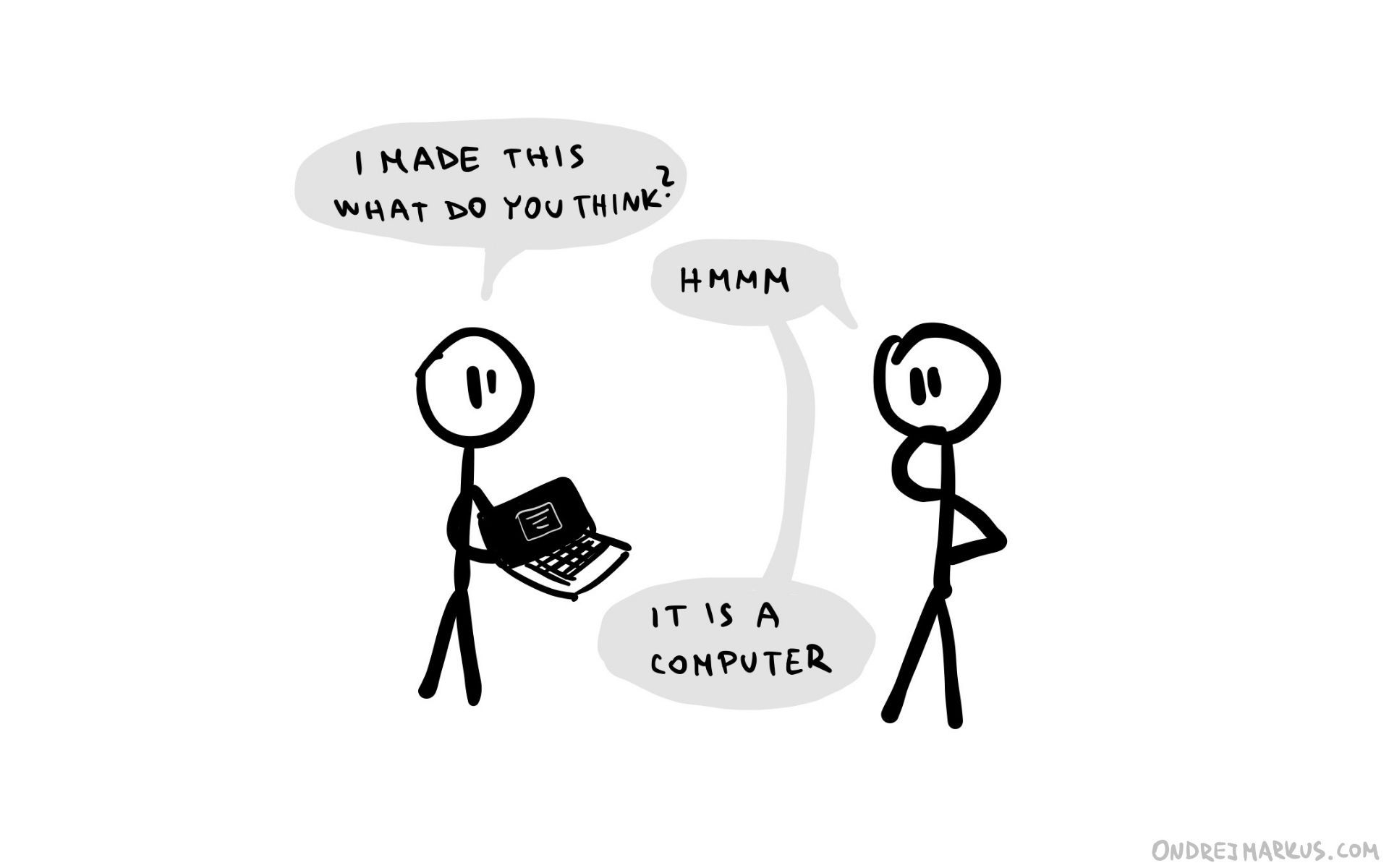
The sooner you see what people don’t understand about your idea, the sooner you can fix it.
If people don’t get it, change your idea. Adapt based on the feedback from your customers.
This is easier to do after one week of work than after one year of work. Because after you’ve worked on something for months or years, you are too invested both emotionally and financially. That’s when sunk costs get you stuck and unable to quit things that don’t work. Avoid getting stuck.
Instead, start to think about your projects in prototypes.
Right at the start, build a very fast first prototype in a day or two (or even a couple of minutes), then immediately send it to someone to get feedback. Learn from their reaction, and use the new information to build a better prototype number two.
This process from prototype to prototype is one feedback loop. And you need to repeat it as fast as you can because the faster you learn the higher is the chance you’ll build something that works.
Get feedback at least every week. Set up your creating process as a fast feedback loop:
And repeat until you run out of time, money, or energy to continue.
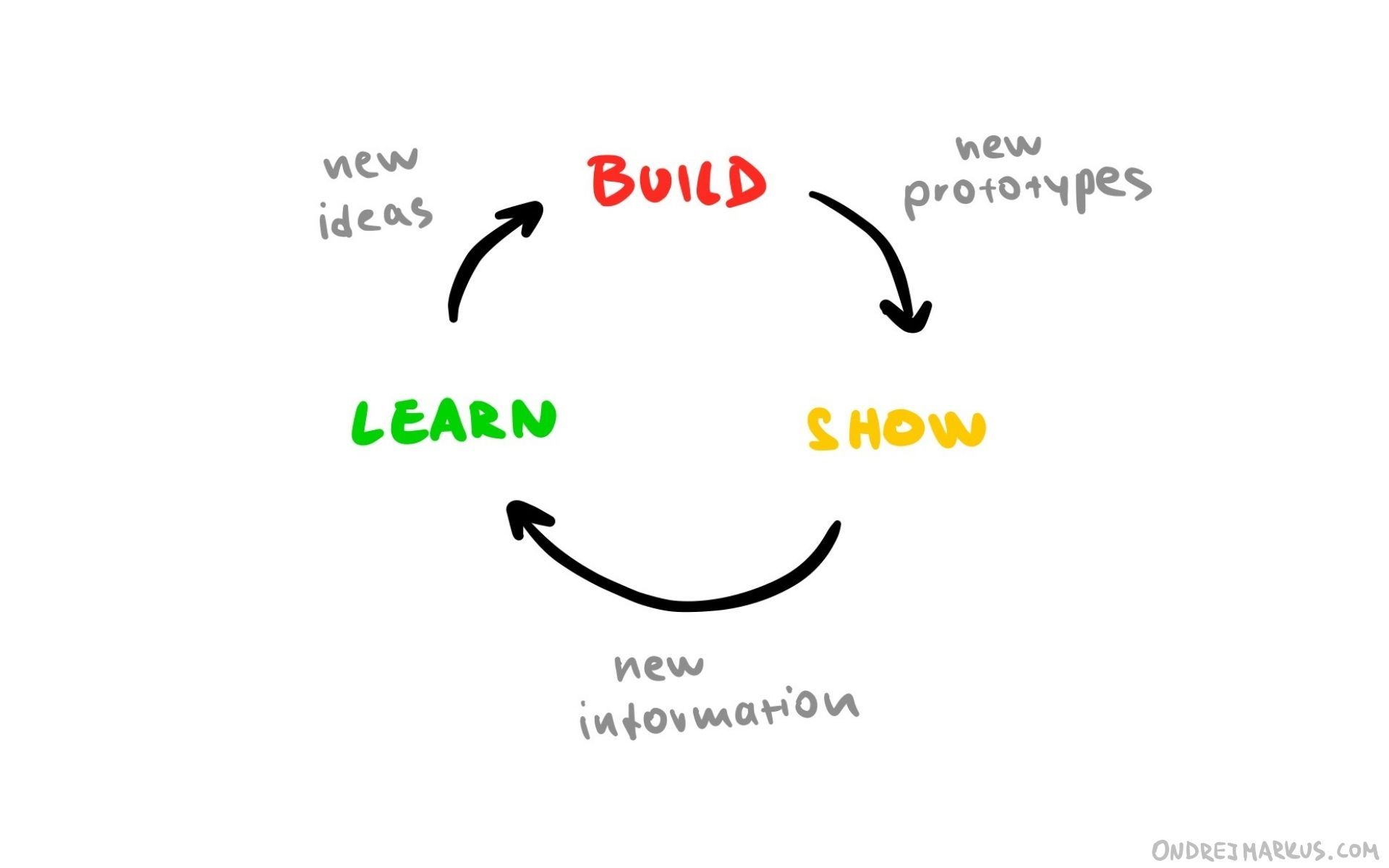
Fast learning feedback loop
This principle is simple in theory but hard to practice because we aren’t used to it. There were no prototypes and fast feedback loops at school. No one ever said to us it’s okay to fail fast at the beginning to learn faster and eventually succeed. We got one attempt to get the outcome right (the test). And if we didn’t, we got a bad grade.
By doing this over and over, we got trained for chasing perfection on our first attempt and we remain terrified of making mistakes.
That’s why embracing fast feedback loops might be difficult for you. It’s hard to replace old habits ingrained in us from a young age. But don’t worry. It gets easier with time, and it will become your second nature if you practice.
Figuring out something that no one has done before inevitably requires trial and error. It’s how good science works, and innovation design is the science’s younger brother.
When you manage to go through 10 feedback loops at the same amount of time in which your competition can do only one loop, who do you think has a higher chance of success?
It’s always the one who learns and adapts faster. Be the fast learner, not the misunderstood genius.
Now when you passed the starting level, and you’re working in fast feedback loops, it’s time to level up your game by switching attention from your solution to the problem.
All of us tend to fall in love with our ideas. We get attached to what we think is a brilliant project, and we stop paying attention to what is the underlying problem it’s supposed to solve.
As a result, we start to ignore negative signals and instead of trying to solve the problem by building something that works, we start protecting our idea by bending the reality to whatever we want to believe.
That’s why you should always focus on the problem first, not your particular solution.
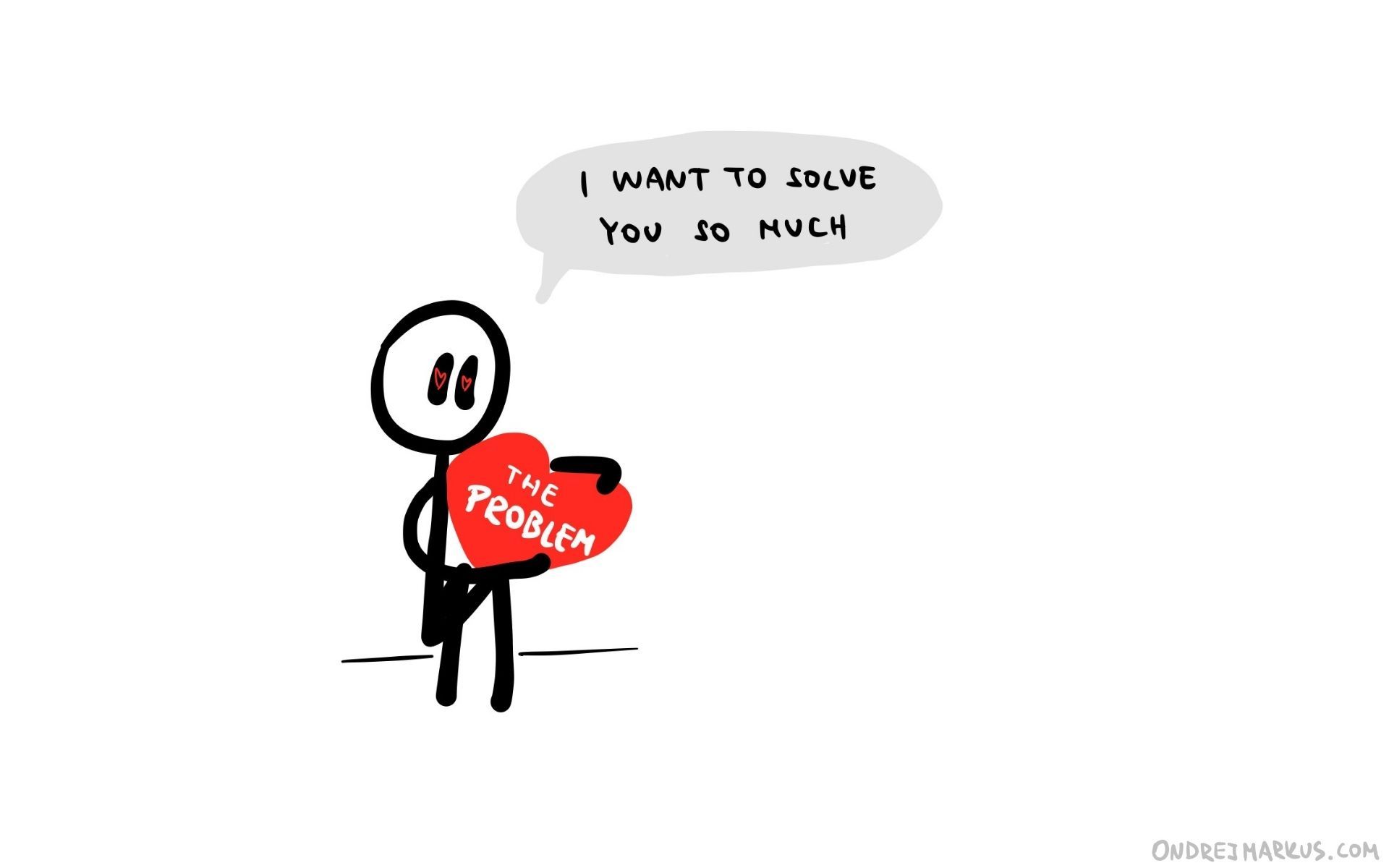
Love the problem, not your solution.
For example, instead of starting with the intent to build an app for budgeting finances, focus first on the problem behind it: What are you trying to solve?
Is it the problem that some people mismanage their finances and get into trouble because of it?
Okay. Then start by understanding the problem a little more. Talk to people who experience this problem and want a solution. They are your target group – your future users and customers.
Do they use any apps already? What does and doesn’t work for them? What frustrates them? Do they pay for something to solve this problem at this moment?
Get deeper into the thinking process of people who experience the problem you’re trying to solve. When you talk to them, you’ll understand how to improve the thing you’re building to fulfill their needs in the best possible way.
You might encounter better and totally different solutions while you’re talking to your future customers. Maybe your solution shouldn’t be an app. Maybe some other form would be more effective in solving the problem.
Or you may find a deeper problem that’s even more interesting and important to solve than the one you started with. That’s okay too. Go ahead and solve that one instead.
You should feel free to discard your solution for another one if it proves to be ineffective. And that’s hard.
We all struggle to let go of things we’ve invested our time into. But old things that don’t work need to be let go off to free our time and energy for things that might.
The answers are hidden in exploring the problem, not tinkering with your solution. Stay flexible and focus on the problem above all else.
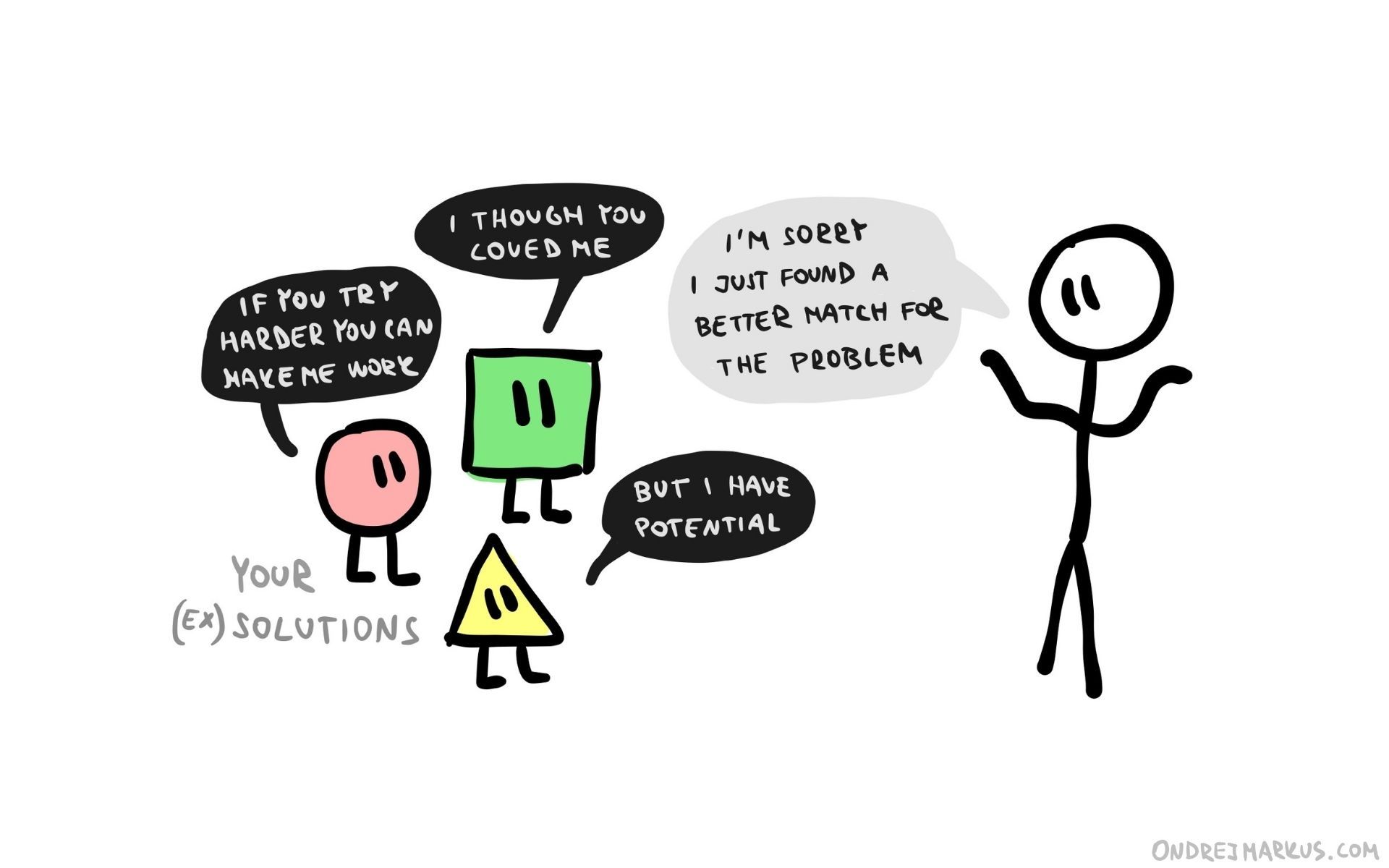
It’s not personal.
9 out of 10 times you wouldn’t be able to guess how to improve your solution by just thinking about it. You need to talk to your customers and test your prototypes with them to understand why your solution does or doesn’t work.
Of course, there are better and worse ways to talk to people about what they need. People are bad at understanding and expressing what they want.
So you have to get good at interviewing others in a way that brings you valuable insights, instead of misleading information. There are hidden needs in everything people say and do. You just have to know how to find them.
A good rule of thumb is to never ask people what they would do, but **always ask them what they actually did ** in the past or are doing now.
What people do is worth more than what they say. Look for insights from people’s behavior, not their words.
So, on which level are you right now?
Your next step is getting comfortable with the level you’re on right now, and only then moving to the next one.
Don’t try to master everything at once. They are levels in a sequence for a reason.
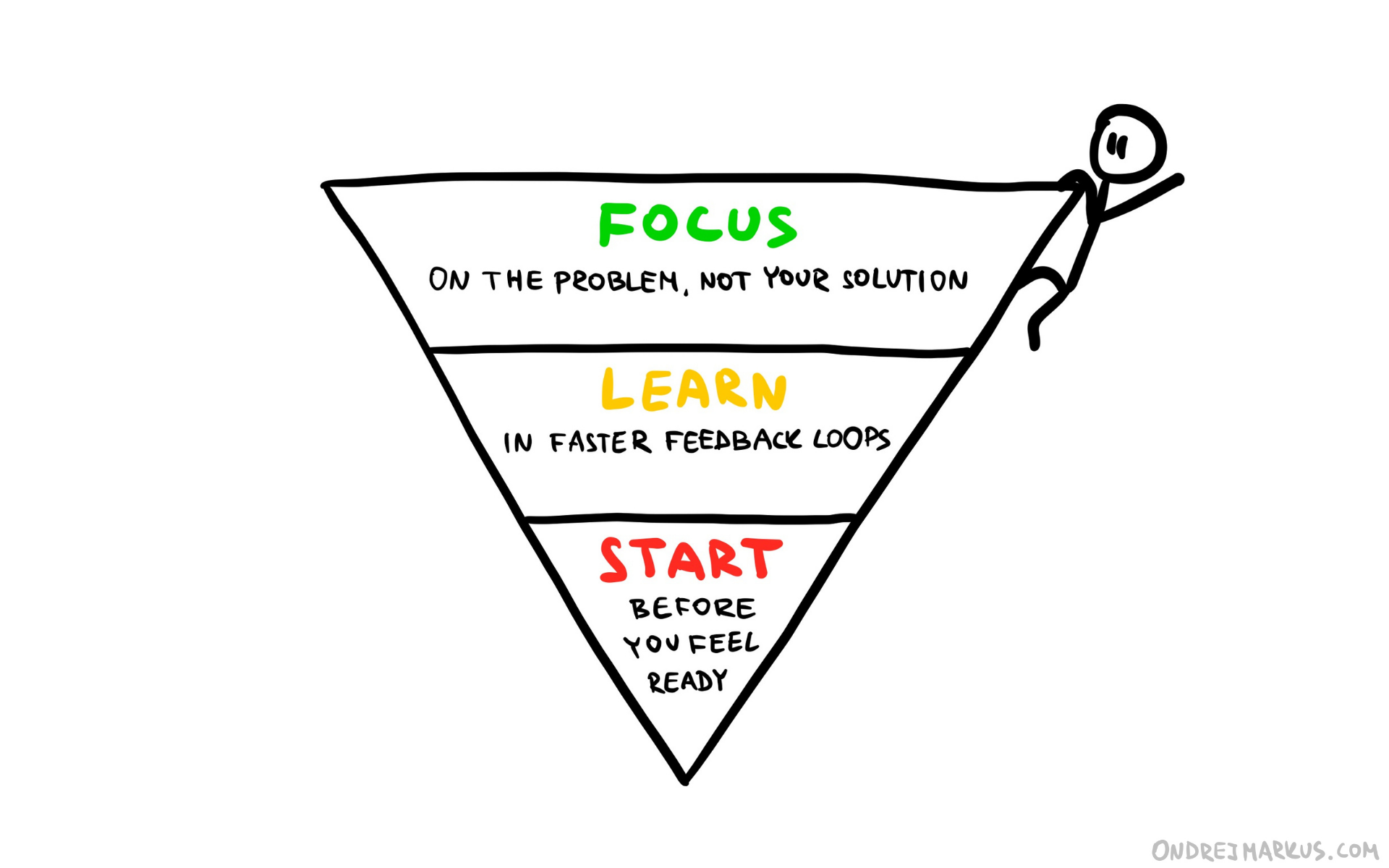
3 levels of becoming an innovator
Here is a summary of the main points from every level:
If you haven’t started yet, it’s the first and only thing that matters for you. You can’t become a better innovator by just reading about it.
Once you’re in the game – solving problems – start working in faster feedback loops.
After you are used to working with feedback, move your attention from your solution to the underlying problem it’s supposed to solve.
I believe, these principles will make you a better innovator, creator, and problem solver.
However, there is a big gap between knowing these levels, practicing them, and mastering them.
I know I haven’t mastered any of them yet. But I’m trying my best to become better every day at making the right things in the right way.
And if that sounds like something you’d like to do, these 3 levels are the direction to go.
Email me your thoughts, feedback, or questions about how to apply this to your project. I’m glad to help any fellow innovator.